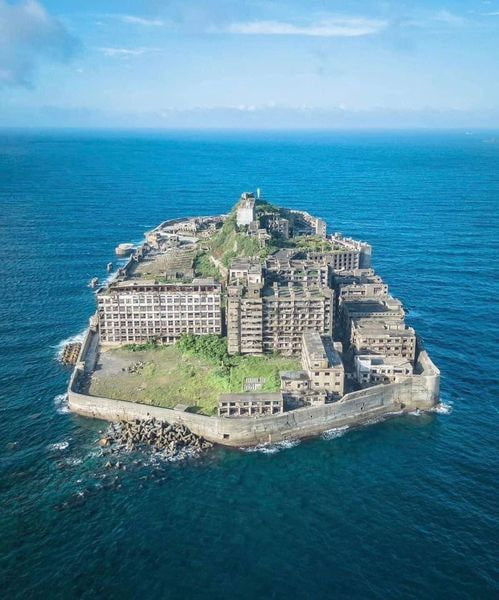A Journey to the Ghost Island
Nestled off the coast of Nagasaki in Japan lies a hauntingly beautiful yet eerie place known as Hashima Island, also referred to as “Battleship Island” due to its shape. Once a bustling coal mining town and home to thousands of residents, Hashima Island now stands abandoned, frozen in time. Join us as we embark on a journey to unravel the secrets of this enigmatic ghost island, exploring its history, architecture, and the stories of those who once called it home.Once a bustling coal mining community and a symbol of Japan’s rapid industrialization, Hashima Island now stands as a silent witness to the passage of time. Join us as we embark on a journey to uncover the secrets of this forgotten island and explore its eerie and evocative ruins.

The Rise and Fall of Hashima Island
In the late 19th century, Hashima Island emerged as a vital hub for coal mining, attracting thousands of workers and their families seeking employment opportunities. The island’s dense population and industrial activity led to the construction of high-rise apartment buildings, schools, hospitals, and even a theater, earning it the nickname “the concrete island.” However, as Japan shifted away from coal mining and towards alternative sources of energy in the mid-20th century, Hashima Island’s fortunes began to decline. By the 1970s, the once-thriving community had been abandoned, leaving behind a haunting landscape of crumbling buildings and deserted streets.However, as Japan transitioned to cleaner sources of energy in the latter half of the 20th century, the demand for coal declined, leading to the gradual abandonment of Hashima Island.

Exploring the Abandoned Ruins
Today, Hashima Island stands as a surreal time capsule, offering visitors a glimpse into a bygone era. The island’s abandoned buildings, including apartment complexes, schools, and industrial facilities, bear witness to the lives of its former inhabitants. As nature slowly reclaims the land, overgrown vegetation intertwines with decaying structures, creating an eerie atmosphere that is both captivating and melancholic. Exploring the deserted streets and crumbling buildings, one can’t help but feel a sense of awe and curiosity about the lives that once thrived here.The eerie atmosphere of Hashima has attracted filmmakers and photographers from around the world, who are drawn to its post-apocalyptic aesthetic and sense of desolation.

Unraveling the Mystery
The abandoned state of Hashima Island has sparked fascination and speculation among explorers, historians, and urban enthusiasts alike. While some are drawn to the island’s haunting beauty and eerie atmosphere, others are intrigued by the stories of the people who once lived and worked here. From tales of hardship and resilience to rumors of ghostly encounters, Hashima Island is shrouded in mystery and intrigue. Despite its remote location and challenging access, the island continues to attract adventurers and researchers eager to uncover its secrets.

Preserving the Pastas
we reflect on our journey through the abandoned ruins of Hashima Island, we are reminded of the fragility of human endeavors and the inexorable passage of time. While the island may now lie silent and deserted, its legacy lives on through the stories of its former inhabitants and the memories they left behind. As we continue to explore and document the remnants of Hashima Island’s past, we honor the lives of those who once called it home and ensure that their stories are not forgotten. Through the preservation and study of abandoned places like Hashima Island, we gain insight into the complexities of human history and the enduring impact of industrialization and urbanization. Let us cherish these remnants of the past and strive to protect and preserve them for future generations to explore and learn from.



